Building Green
Rebuilding can be an overwhelming journey, but chosing sustainable options doesn't have to be.
Build It Back Green's Green Building Guide makes it easy to be aware of the lowest cost, most durable rebuilding techniques - focusing on energy efficiency, water savings and indoor air quality - so you can rebuild in a stonger, more sustainable and resilient way.
The guide features more than 70 technologies to rebuild to more disaster resilient standards. Products and services on offer range from finance, building design, building materials, power, water, heating and cooling, appliances, floor coverings, paints and finishes, backyards and more. Explore how you can build a stronger, more bushfire resilient home.
You can search for products and services through the interactive home tour, by using the quicklinks below the house or by searching through the guides by category.
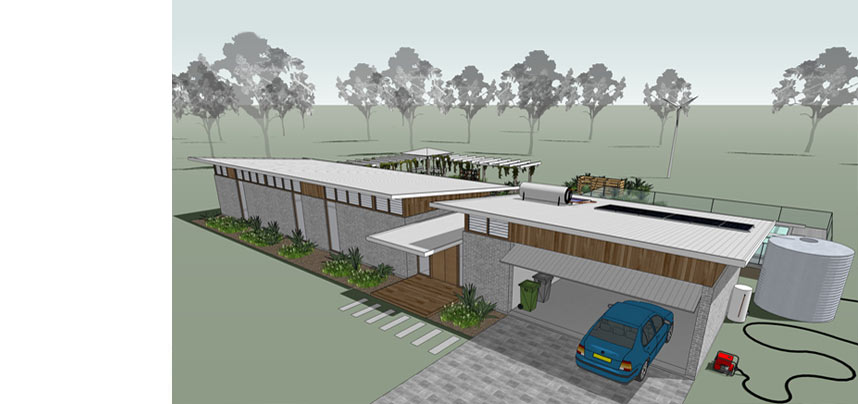

Sustainability starts from the ground up. Make sure you plan your house to be sustainable by using good design, robust materials and install any infrastructure needs for future items such as solar panels, solar hot water and rainwater.
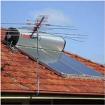
A solar hot water system is one of the best ways to save on energy bills while reducing your impact on the environment. Heating water accounts for 30% of an average Australian household's energy use. Solar hot water systems generally have a longer life span than other types and use either flat panel or evacuated tube solar collectors. There are government rebates to help pay for solar hot water.
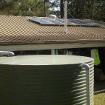
Rainwater can be used in the garden, toilet, bathroom, laundry and even for drinking. When choosing a tank, consider the location, tank material (concrete and stainless steel tanks are particularly suitable in bushfire areas), size, access and use for the water. Include rainwater tanks in your building design, and if possible place your tanks on higher ground so that water can be gravity-fed and you avoid noisy and energy-using pumps.
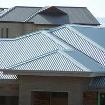
A white roof is a simple, low cost way to save on cooling costs. Lighter colours reflect heat rather than absorbing it. You can reduce living area temperatures by up to 3 to 4 degrees by painting your roof white. A range of white roof coatings and materials are available to make your house more liveable in summer.
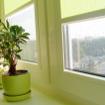
Some types of glass - such as tinted, toned or reflective - can help make your windows more energy efficient. Double-glazed windows are best for insulating your home and can cut heat loss in half compared to single-glazing. It is important to check the Bushfire Attack Level (BAL) in your area because in some places you may be required to install thicker toughened glass, bushfire shutters or bushfire-approved window frames.
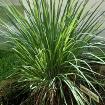
It is important to consider plants as part of any plan to protect a property against bushfires. While no plant is fireproof, many have features that minimise the extent to which they contribute to the spread of fire. Fire-resistant plants have high moisture content, high levels of salt and low levels of volatile oil in their leaves.
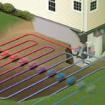
Relatively unknown in Australia, ground-source heat pumps are one way to reduce the amount of energy used in cooling and heating while keeping your home comfortable. Ground-source heat pumps transfer heat between the house and the ground or a body of water. They use the constant temperature from a few metres below the surface to help regulate the temperature in the home. Ground-sourced heat pumps is a high-quality, energy-efficient cooling system but currently expensive.
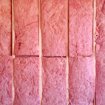
Insulating your house is one of the best ways you can save money on energy bills and keep your house warm or cool. The two main types of insulation are bulk and reflective. Some building materials, such as aerated concrete blocks, fibre-reinforced gypsum and rendered straw bales are also good insulators. Remember to choose insulation products appropriate to the Bushfire Attack Level of your area.
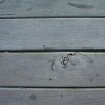
Decking can be made of wood or composite material - like recycled or reclaimed wood and recycled plastic. Non-wood material is often UV and termite resistant and requires less maintenance. When using timber, make sure it is sustainably sourced or, even better, recycled. Remember that in some bushfire-prone areas decking may not be made from combustible material.

Recycling is the method used to re-process used products or waste into new products. This process of developing waste into useful materials again has the potential to reduce energy use, air pollution, water pollution and the overall consumption of raw materials. Collection of materials to be recycled can be done using a specific bin in the kitchen and/or garage of your home.

The Federal Government's LPG vehicle scheme offers grants of $2000 towards the purchase of a new vehicle already fitted with LPG or a grant of $1500 for the LPG conversion of a new or used vehicle. You can only apply for one grant every three years.
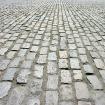
Rather than pouring concrete, porous paving is something to consider when you are putting in new paving. Porous paving can be made of permeable concrete, pebble or modular plastic, rubber pavers, gravel or certain forms of asphalt. It looks similar and can have the same stability as conventional pavers, but it allows water to seep through into the ground for surrounding plants and trees.
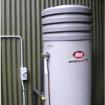
Heat pumps are effective in producing hot water, even in situations where direct sunlight is not possible. They don't consume large amounts of power and can make three units of energy for every unit they consume. A government rebate is available for heat pumps.
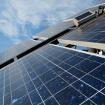
Solar power can be generated in homes in all parts of Australia as long as there is a suitable site with a north-facing (or almost north facing) roof, or ground space that is not shaded during the day. Spending some money on more efficient appliances and making your home more energy efficient means you can buy a smaller solar power system.

The types of materials selected at the design stage of building a home will impact fundamentally on its longer-term sustainability. These choices have implications for saving energy, improving bushfire resilience and improving comfort. Building materials typically considered to be 'green' include renewable plant materials like straw and mud brick, timber from forests certified to be sustainably managed, recycled materials and other products that are non-toxic, reusable and renewable.
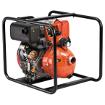
If you need to draw water from a tank or swimming pool, have a petrol, diesel or electric pump (including a back-up generator for when mains power fails during a bushfire). The size of the pump you will need depends on: the water source, number of outlets used simultaneously, and hose dimensions. Because a pump stops working when it overheats or melts, your pump must be protected from fire and radiant heat.
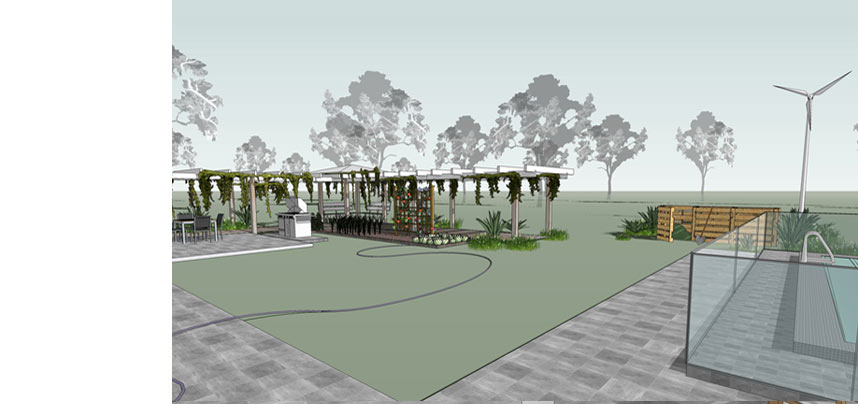

Australian backyards are known for their resilience. A sustainable home can be as much about what you do outside your home as what you do inside it. Follow these ideas to have a real impact.
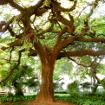
Windows let a huge amount of heat in and out of a home. With a little strategically placed shading, you can block up to 90% of all heat coming through your windows and still enjoy the view. Shade structures can range from awnings to eaves, shutters, shade sails or trees. Contemporary shade sails can introduce elegant lines and spaces to your home
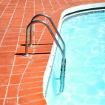
Pools can lose up to 11,000 litres and consume 2200 kWh of energy a year. A good pool cover can reduce evaporation by up to 90%, and you can change to a cartridge filter and install a rainwater tank to top up the pool. A solar-energy pump will also reduce electricity use. You can build a "natural swimming pool" that mimics biological filter systems in a natural stream and pond.
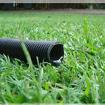
There are three types of greywater set-ups: simple, cheap diversion-only systems that require some maintenance; diversion and filtration systems; and complex and more expensive diversion and treatment systems. In a non-sewered area, you can treat and re-use all the wastewater used on your property including sewage, thereby greatly reducing your reliance on rainwater.
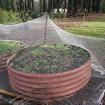
'Edible gardens' are becoming a popular way to integrate agriculture into typical backyard lifestyles. Increasingly people are creating beautiful landscapes in their own backyards that can help families to achieve healthy eating and food self-sufficiency in a way that suits a wide range of skills, budgets, yard sizes and personal tastes. This is part of the permaculture trend (the word 'Permaculture' integrates the concepts of permanent agriculture and permanent culture).
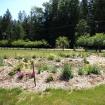
Raingardens, such as ponds and water features, help collect water and allow it to seep into the soil. They capture stormwater flow from paved areas, rainwater tanks or roof downpipes. Rainwater gardens should include plants that can tolerate soil changing from very wet to periodically dry. Rocks or pebbles should be used as mulch, as these don't float and can protect the soil from evaporation and suppress weeds.

Pergolas hung with deciduous vines provide a cool haven, not to mention a beautiful garden feature. During the summer months they provide excellent shade but also allow the sun in during winter when the vines have no leaves.
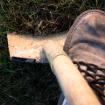
By composting food scraps using a worm farm, compost bin or bokashi bin you can cut greenhouse gas emissions, reduce the amount of waste that ends up in landfull and create compost materials that your garden and pot plants will love - while halving the amount of rubbish in your weekly garbage bin.
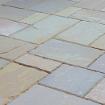
Porous paving can have the same stability and function as non-porous paving, but it allows water to seep through into the ground and to water surrounding plants. Porous paving can be permeable concrete pavers, pebble or modular plastic and rubber pavers that look similar to conventional pavers. Each of these allows water to filter through voids filled with sand, gravel or grass.
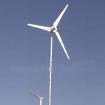
Wind power is a clean and cost-effective source of electricity. For rural homes in suitably windy areas, it is often a cheaper option than solar power. If you live in a rural area and have plenty of open space around your home, an experienced wind turbine installer can estimate your wind energy resource. Check with your local council before installing a wind power system.
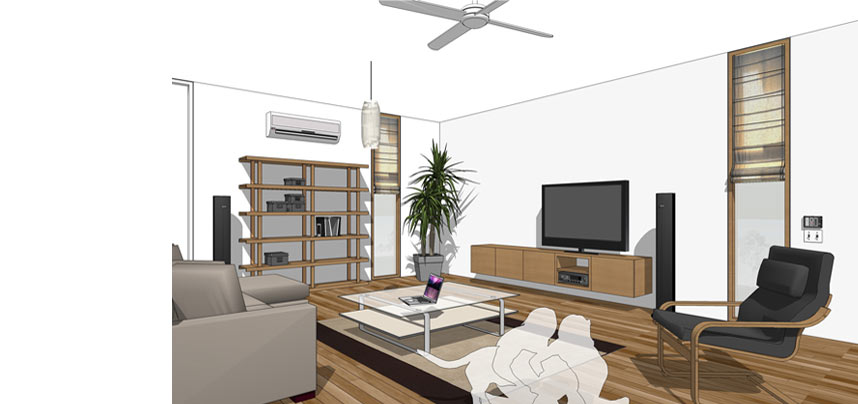

You probably spend a lot of time in your living room, so it's the best place to make sure your home is comfortable and sustainable.

Ceiling fans are cheap and energy-efficient coolers in summer and, by switching them into reverse in winter, move warm air from the ceiling down to floor level. The blade material (typically timber, moulded plastic or metal) affects both air flow and energy consumption. Normally, metal blades produce a higher air flow than timber blades, but they also use more power and can make an audible whirring sound.

Help keep the heat in during winter by taking into consideration zoning the rooms in your house so that you can close doors to keep the heat inside the living areas. In cold climates use an air-lock, a small room that is a buffer between the entrance to the house and living spaces. An air-lock room can be a simple entranceway where you can store shoes and coats or a laundry at the back door.
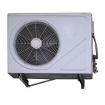
The most energy-efficient domestic air conditioners for the dry Victorian climate are the evaporative variety though you need to check their water use. There are also some very efficient refrigerated air conditioners. When buying an air-conditioner, check its star rating and comparative energy consumption, which is shown in kilowatt hours. Solar air-conditioners are starting to be available but it is early days yet.
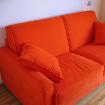
Look for furniture that is made from natural materials. Synthetic materials contain volatile organic compounds (VOCs) that "off-gas" into the surrounding environment and can affect the air quality and health of your home.
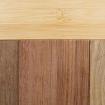
Timber floors look beautiful, are low in embodied energy and can be re-used, recycled or composted later. Choose sustainably sourced and recycled timber and a natural finish for minimal environmental impact. Bamboo, like timber, is strong, durable and lightweight but uses fewer valuable resources (such as water), because it takes only three to six years to grow. Remember to check your bushfire regulations before choosing your material.

Set your computer to enter "sleep" mode when not in use and turn the computer monitor off when you're not using it, even for a short time. Appliances can use more energy over a year in standby than in actual operation. Choose an LED backlit LCD monitor as they generally use less energy and, if available, choose home entertainment and office equipment that have the Energy Star® logo.
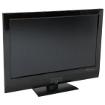
Many appliances such as TVs, DVD players, stereos and computers use "standby power" which may account for up to 10% of household energy bills. Standby power is the electricity used when appliances aren't fully switched off, such as when the TV is turned off with the remote control. Turn appliances off at the power switch. And don't super-size your television - some larger televisions use more energy than a standard-sized fridge!
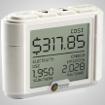
Install an energy meter that not only monitors and displays your electricity use but gas and water as well. From a touchscreen display you can look at real-time analysis of your energy use and the effect of turning off lights or appliances make to your consumption. Some energy meters can even email you weekly or monthly reports.
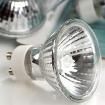
When buying light bulbs check the wattage, not the voltage. Many, particularly halogen downlights, are sold as "low voltage", implying low energy consumption - which is not the case. About 90% of the energy that goes into a halogen light bulb turns into heat, not light. LEDs are much more efficient and can reduce your energy use and power bills.
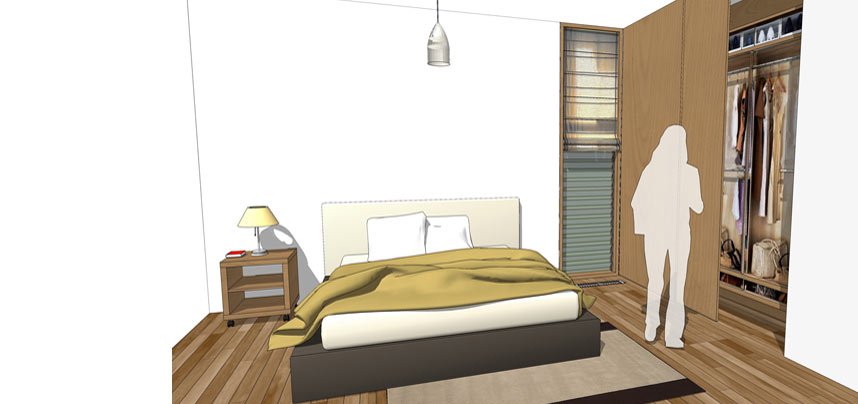

Create a healthy space by choosing non-toxic and renewable products for your floors, sheets and even your clothes!

When buying light bulbs check the wattage, not the voltage. Many, particularly halogen downlights, are sold as "low voltage", implying low energy consumption - which is not the case. About 90% of the energy that goes into a halogen light bulb turns into heat, not light. LEDs are much more efficient and can reduce your energy use and power bills.
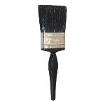
Using environmentally friendly paints in your home doesn't have to add significantly to the cost. Paints with ultra-low volatile organic compounds are comparable in price with premium paints, and plant or mineral-based paints only cost fractionally more. Look for paints that have been certified by recognised eco-labeling programs such as GECA. Paints with the Energy Star symbol can reflect up to 50% of solar energy, lowering indoor cooling costs.
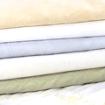
Natural fibre sheets are made of bamboo, silk, soy hemp or modal. The sheets are cool in the summer and warm in the winter. The benefits in sheets and towels made of natural fibres are that unlike cotton-polyester fibres, they don't rely on oil - which also often is an exported ingredient - they are antimicrobial. They're also ecological when grown: they don't require fertilisers/pesticides and they grow fast.
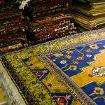
Floor coverings influence indoor air quality. Synthetic materials contain volatile organic compounds that release into the environment. Carpets made from natural products such as wool, silk, cotton, coir, sisal or seagrass can look great and bring warmth to a room. They are a non-toxic alternative to synthetic carpets and are more likely to be recyclable or biodegradable.
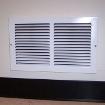
Heat shifters are fans, or a combination of a fan and a duct, that take the excess heat that accumulates near the ceiling in one room and use it to heat another room. They work quite well and almost heat the second room for free. You can buy them as kits, or do them yourself from a fan, a bit of ducting and a vent cover or two.
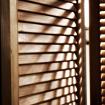
Windows let a huge amount of heat in and out of a home. With a little strategically placed shading, you can block up to 90% of all heat coming through your windows and still enjoy the view. Shade structures can range from awnings to eaves, shutters, shade sails or trees. Contemporary shade sails can introduce elegant lines and spaces to your home.

Timber floors look beautiful, are low in embodied energy and can be re-used, recycled or composted later. Choose sustainably sourced and recycled timber and a natural finish for minimal environmental impact. Bamboo, like timber, is strong, durable and lightweight but uses fewer valuable resources (such as water), because it takes only three to six years to grow. Remember to check your bushfire regulations before choosing your material.

Flee markets and second hand shops are great places to make affordable finds and the clothes are often in very good condition too. Nowadays there are also second hand shops on the Internet. Another way to reuse clothes is to give new life for old garments, e.g. creating a bag out of an old top or making children's clothes from old adults' clothes.
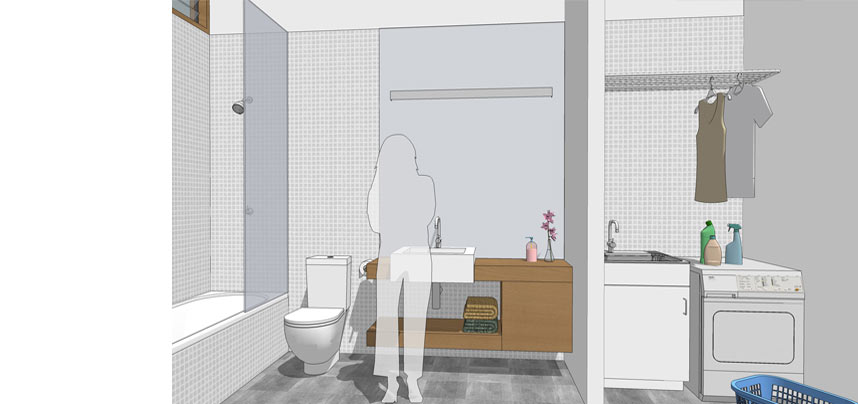

Installing water efficient showerheads and dual flush toilets are just two of the many ways you can save water in your bathroom. Making changes in the laundry can be as simple as hanging up your clothes instead of using the dryer or purchasing the latest in energy and water efficient appliances.
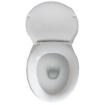
Flushing toilets with drinking water seems such a waste. You can save thousands of litres of water a year by installing a dual-flush toilet, and be rewarded with a $50 rebate from the Victorian Government. Consider using greywater or rainwater to flush your toilet. A plumber can install either system with relative ease.
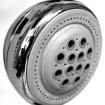
A water-efficient showerhead costs the same as a conventional one but saves hundreds of dollars in water bills and often has additional features. A 4-star rated showerhead uses 7 litres per minute, while the conventional uses 15 litres per minute. The Victorian Government offers a rebate for three-star showerheads. Inquire at your local council or water retailer about free showerhead exchange programs and discounts on water-efficiency products.
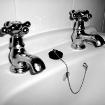
Choose taps that reduce water wastage or taps that have in-built flow regulators. Flow restrictors or aerators are also usually easy to install to most taps for a fairly low cost. You can also put in a mixer tap to allow you to preselect your temperature and prevent wasting water when trying to get the temperature right.
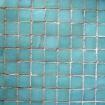
Concrete is great for flooring because it stores and releases heat, and polished concrete floors look stunning. There are finishes and colourings that suit many tastes. Tiles also create good thermal mass and there are several types to choose from, e.g. ceramic, slate, terracotta and brick. Darker colours with matt surface are better for storing heat. Remember to ask your tile supplier about where their materials are sourced to check the environmental impact.

Rather than using an electric clothes dryers use the natural power of the sun to dry your washing by placing your clothes outside on a clothes line. During the colder and wetter months use a clothes rack inside your house. Retractable clothes driers can fit into small spaces and take advantage of the hotter air near the ceiling.
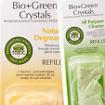
Especially children are sensitive for household products that normally contain chemicals that drift via the air and surfaces into all people. When purchasing e.g. cleaning, washing or pest control products, choose the ecological alternative that is as effective as the chemical detergents but do not burden the environment or cause allergic reactions, as they are made out of nature's own antibodies.
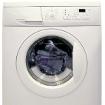
Save energy by washing your clothes in cold water, always wash a full load and buy detergents made from biodegradable substances that are low in sodium and phosphorus. You can then use the greywater from your washing machine in the garden.

Greywater systems recycle waste water from the bathroom and laundry for use in the garden or even for toilet flushing or washing clothes. Water from diversion systems, which are easy and cheap, send the water straight out to the garden, while water from greywater treatment systems can be used in the toilet and laundry. All systems need careful maintenance. Check if yours qualifies for a for a government rebate.
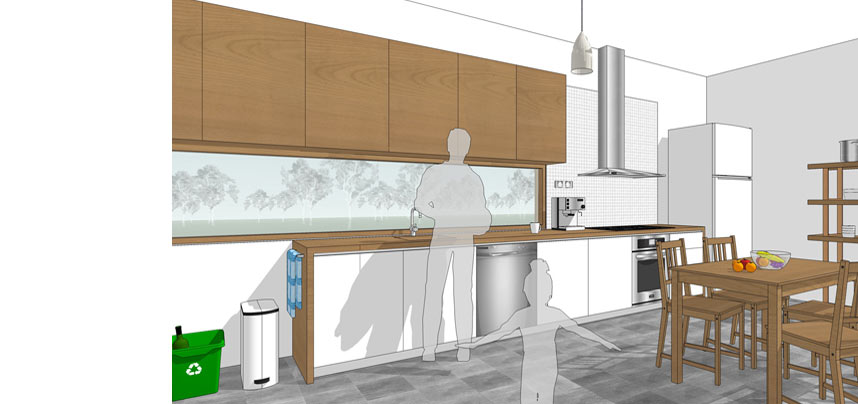

While the kitchen is home to one of the house's biggest energy guzzlers, the fridge, there are also many ways you can reduce your energy and water use.

Recycling reduces pollution and lowers greenhouse gas emissions. Nearly everything can be recycled (glass, paper, metal, electronics, textiles etc.) both at home as well as at the workplace and are often taken care by local community services. Also nearly all of the kitchen waste can be composted (bio degradable waste). Compost is very rich in nutrients and therefore excellent in gardening and landscaping.
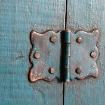
Recycled fit-outs reduce renovation costs and are a good green option. New cupboards and fixtures, bench tops, tiles and sinks all consume material and energy in their production, transportation and disposal. Homeowners updating their homes supply a market for pre-loved kitchens and bathrooms, many of them in excellent condition and style but at a fraction of the usual cost.

Choose taps that reduce water wastage or taps that have in-built flow regulators. Flow restrictors or aerators are also usually easy to install to most taps for a fairly low cost. You can also put in a mixer tap to allow you to preselect your temperature and prevent wasting water when trying to get the temperature right.
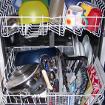
Every appliance has two costs - the purchase cost and the ongoing running cost. Energy and water-efficient appliances will save money on bills and won't take long to pay back. Look for energy-rating labels, energy-star logos, gas-energy ratings and WELS (water consumption) rating labels. If two suitable appliances have the same star rating, choose the one with the lower energy consumption.

When buying light bulbs check the wattage, not the voltage. Many, particularly halogen downlights, are sold as "low voltage", implying low energy consumption - which is not the case. About 90% of the energy that goes into a halogen light bulb turns into heat, not light. LEDs are much more efficient and can reduce your energy use and power bills.
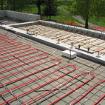
Hydronic systems use heated water to keep the home warm. They are usually gas fired, although wood-fired boilers and solar heaters are available too. The temperature of the radiator never exceeds the water boiling point, making them fire safe, ideal for homes with children and drying clothes. Hydronic systems are best to install at the time of house construction so the piping can be placed in the concrete slab.
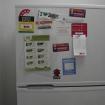
To save energy, choose a fridge that meets your needs - you don't need a big fridge cooling empty space or one that is so small that you need a second. Place fridges and freezers in cool spots and allow at least 50 millimetres of space at the top, back and sides. When buying a new fridge, check the energy-star rating.

Food may travel long distances to the grocery stores, which stresses the environment and increases the use of preservatives in the food. Buying organic food will pay itself back in the long term: as they are grown chemical-free, they are higher in nutrient, vitamin and mineral content which leads to better health, economic productivity, social fulfilment and thus may even help avoiding medical costs.

One of the easiest ways to make your home sustainable is to choose the GreenPower option from your electricity retailer. Accredited GreenPower is electricity generated from renewable energy sources such as wind, solar, wave and small-scale hydro plants, as well as landfill gas and biomass. By buying GreenPower you help support the development of the renewable energy industry and reduce the demand for electricity from the burning of fossil fuels.
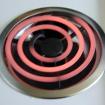
Match your pot size to the burner size to avoid heat escape. Use preheat settings only when baking and make sure the oven door is sealed tightly. Hybrid solar ovens use 75% less energy than a conventional electric range, or an "induction stovetop" uses up to 90% of the energy it produces.
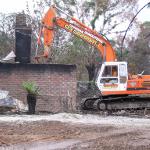
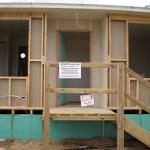
In March 2009 new residential building standards were introduced in Victoria in response to Victoria's devastating bushfires. The new residential building standard applies to all new buildings, alterations and additions in Victoria.
The new standard has 6 levels of Bushfire Attack Levels (BAL), compared to 4 in the previous standard, that predict the likelihood and severity of bushfire danger. Depending on the BAL your house is assessed as being in, there may be material and construction requirements that you need to comply with.
There are no construction requirements for the lowest level (BAL-LOW), however requirements increase in stringency as the BAL level increases. The BAL do not specify design requirements just construction methods and type of materials. Specific building materials have not been listed in the new building standard though depending on your BAL level some building materials will need to meet the Australian Standard AS1530.8.
It is important that your building designer and builder incorporates the new regulation when designing your home. Read the Building Commission's Guide to Building in Victoria after the Bushfires and Bushfire Resilient Design.
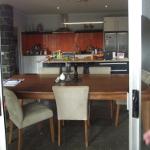
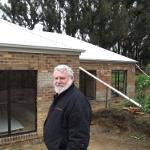
The most important part of building green is to get your house design right from the beginning.
Use passive solar design principles of orientation, thermal mass, cross ventilation, insulation and shading so that your home is a comfortable temperature throughout the year and helps save money on your energy bills.
Employ a designer who is familiar with your zone and who designs climate-appropriate buildings.
In Victoria this means orientating the living spaces of your house, such as lounge rooms and kitchens, to face north.
Make sure your home has good thermal mass to absorb excess heat from within the house during summer days and dump it to cool night skies.
In winter, solar radiation is allowed to warm the thermal mass during the day, re-radiating the heat back into the house over a period of hours. Read Your Home's Passive Design Guide, resourceSmart's House Sitting Fact Sheet and Thermal Mass Fact Sheet.

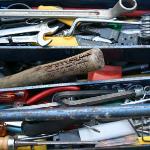
One of the most important aspects of sustainable building is to build a house that lasts more than a lifetime. Crucially, when designing your house, think ahead. Will your family grow, will it shrink or will it stay stable? How will your own health impact your needs in 10 or 20 years time? With these things in mind, you can design a house that not only meets your current needs, but can adapt to your changing needs without you later incurring the cost of an extension or renovation.
There are many design considerations you can include in your home so that it is adaptive and gives you flexibility as your circumstances change. These include the width of passage ways, location of kitchens and bathrooms and height of storage spaces.
Also make sure your home is built for the long haul, that its materials are durable and able to be easily reused or recycled and that good building practices are used.
Listed suppliers are a guide and are not endorsed by Green Cross Australia or the Alternative Technology Association.
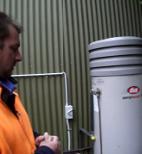 Find out more about heat pumps
Find out more about heat pumps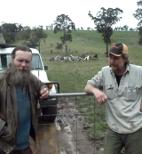 EcoResilience in Flowerdale
EcoResilience in Flowerdale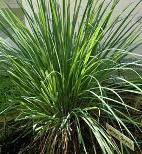 Fire Resistant Plants & Gardens
Fire Resistant Plants & Gardens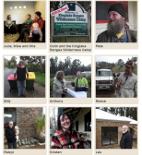 Our Stories
Our Stories
Rebuilding can be an overwhelming journey, but chosing sustainable options doesn't have to be.

Green living is relevant for all Australians as we confront pressing 21st century environmental stresses.

Anthony Smith, resident of Kinglake, talks about building his new Nine Star Home in the aftermath of Black Saturday.

Green Cross Australia's CEO Mara Bun admires Robyn Morris' new sustainable and fashionable home that she rebuilt following the Black Saturday bushfires.
 BVN
Architecture is a significant Australian architectural practice,
widely acknowledged both in Australia and overseas for creative,
award winning architecture and design, and sound professional
expertise.
BVN
Architecture is a significant Australian architectural practice,
widely acknowledged both in Australia and overseas for creative,
award winning architecture and design, and sound professional
expertise.
Strongly committed to both social and environmental sustainability, BVN has received numerous sustainability awards including the NSW RAIA Milo Dunphy Award for Sustainable Architecture and most recently three BPN 2010 Sustainability Awards.
The Build It Back Green 'Green Building Guide' is Victoria's
complete post-bushfire rebuilding products and services
guide.
Green Cross Australia's technology partner for Build it Back Green
is Alternative Technology Association (ATA), Australia's leading
not-for-profit organisation promoting sustainable technology and
practice.
ATA provides services to members who are actively walking the talk
in their own homes by using good building design, conserving water
and using renewable energy.
ATA is proud to contribute this Green Building Guide to support
Victorians affected by Black Saturday's bushfires, and indeed to
encourage all bushfire impacted communities around the world to
embrace sustainability as they confront the growing impacts of a
warming planet.
As other extreme weather events occur around Australia, Build It
Back Green and the Green Building Guide will grow. As stories are
shared, and knowledge gained, we hope to make sustainable
rebuilding the standard.
If you believe that your product or service contributes to an
eco-resilient future, please contact Green Cross Australia to let
us know about it.